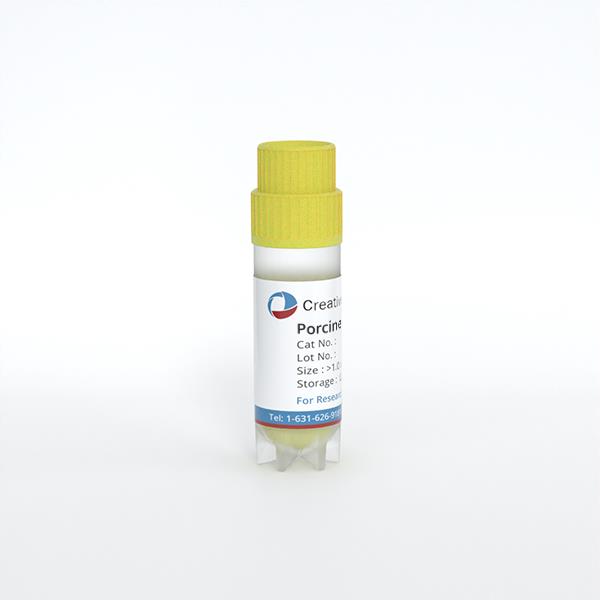Description
Porcine Dermal Microvascular Endothelial Cells from Creative Bioarray are isolated from skin tissue of porcine. Porcine Dermal Microvascular Endothelial Cells are grown in T25 tissue culture flasks pre-coated with gelatin-based coating solution for 2 min and incubated in Creative Bioarray’ Culture Complete Growth Medium generally for 3-7 days. Cultures are then expanded. Prior to shipping, cells are detached from flasks and immediately cryo-preserved in vials. Each vial contains at least 0.5x10^6 cells per ml and are delivered frozen. The method we use to isolate endothelial cells was developed based on a combination of established and our proprietary methods. These cells are pre-coated with PECAM-1 antibody, following the application of magnetic pre-coated with secondary antibody.
Cell Type
Endothelial Cell
Quality Control
Porcine Dermal Microvascular Endothelial Cells are tested for uptake of Dil-Ac-LDL (Catalog No. L-35353, Invitrogen), a functional marker for endothelial cells. Porcine Dermal Microvascular Endothelial Cells are negative for bacteria, yeast, fungi and mycoplasma. Cells can be expanded for 3-5 passages at a split ratio of 1:2 under the cell culture conditions specified by Creative Bioarray. Repeated freezing and thawing of cells is not recommended.
Storage and Shipping
Creative Bioarray ships frozen cells on dry ice. On receipt, immediately transfer frozen cells to liquid nitrogen (-180 °C) until ready for experimental use. Live cell shipment is also available on request.
Never can primary cells be kept at -20 °C.
Citation Guidance
If you use this products in your scientific publication, it should be cited in the publication as: Creative Bioarray cat no.
If your paper has been published, please click here to submit the PubMed ID of your paper to get a coupon.
What should I do if the adhesion of the cells is low after thawing or passaging?
This situation is mainly due to the low humidity caused by the collection of static electricity on the culture container. This can be reduced by increasing the humidity in the room, using anti-static devices or wiping the outside of the culture vessel with a disinfected wet towel. In addition, uneven mixing of reagents and rotational speed of the culture flask can also cause this phenomenon to occur. Therefore, when performing cell culture, make sure that the cells and all reagents are well mixed. When using a shaking incubator for cell culture, pay attention to setting the appropriate rotation speed.


